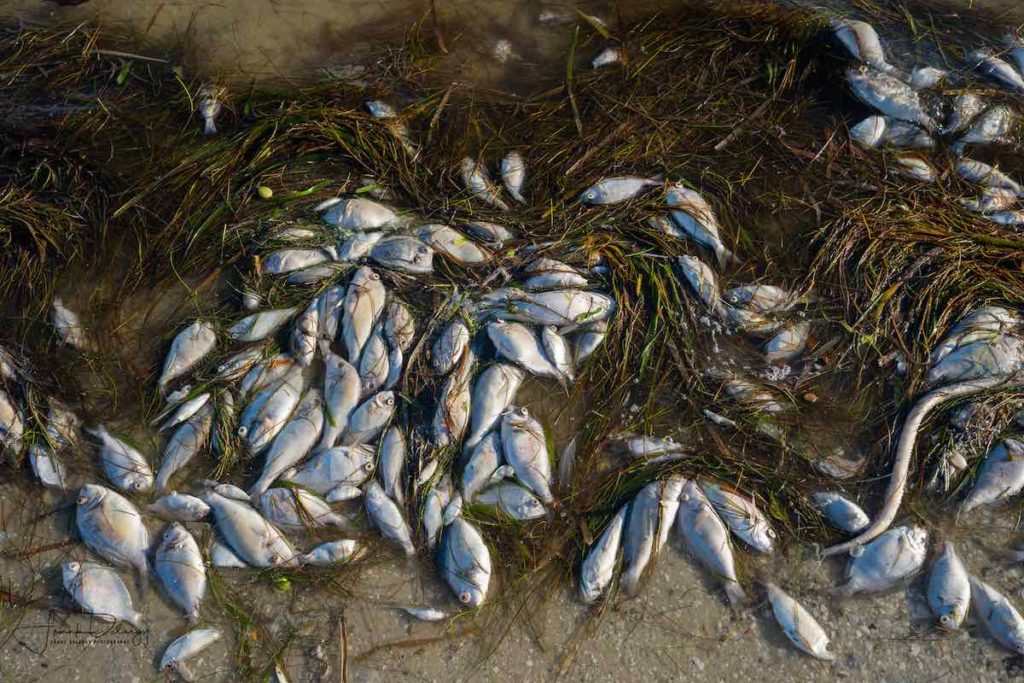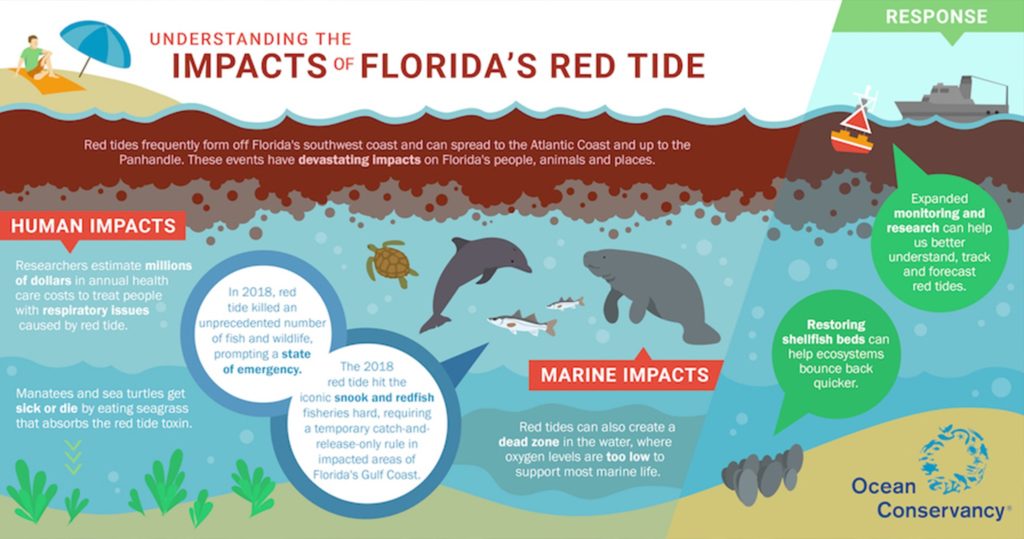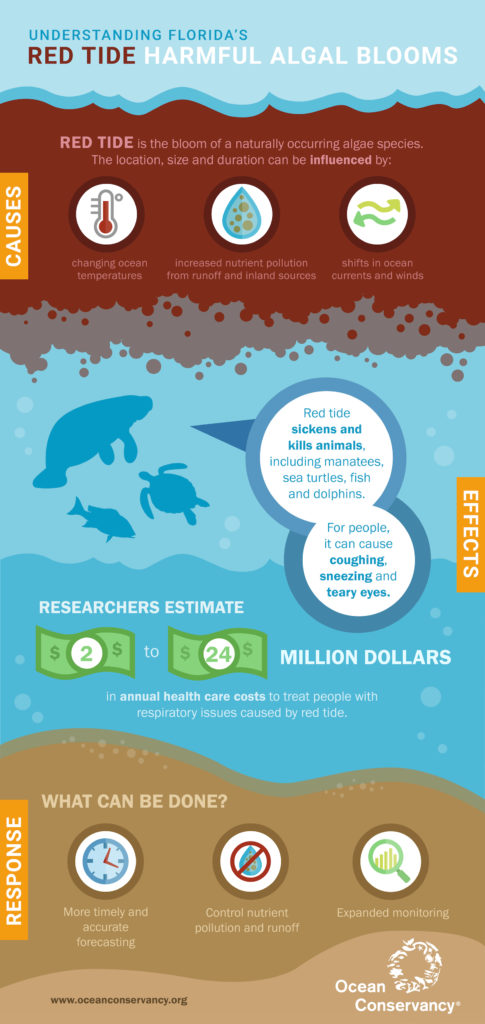Florida’s Harmful Algal Bloom Crisis
Floridians are facing a crisis as harmful algal blooms (including significant red tide events in southwest Florida) are impacting our ocean and coasts, killing iconic marine wildlife, impairing our beaches and making people sick. These events are endangering the Floridian way of life, one that depends on a vibrant, healthy ocean to sustain coastal communities and draw thousands of people to our beautiful beaches.

For example, at the peak of the 2018 red tide event there were blooms affecting nearly 1,000 miles of coastline from Pensacola to Port Canaveral. Red tide was most persistent in both inshore and offshore waters of six counties in Southwest Florida and, at its worst, covered thousands of square miles. Red tide events can grow as large as 10,000 square miles—bigger than the entire area of New Jersey.

Red tide is a naturally occurring organism that is always present in the salty coastal waters of Florida. But, due to a combination of circumstances that include airborne nutrients, waterborne pollutants, ocean currents and weather, Florida can experience large-scale blooms, such as the 2018 event. And when red tide blooms, it can be toxic to fish, birds, reptiles and mammals, even killing wildlife on the coasts. It can also cause significant respiratory distress in people, which can, in turn, hurt local economies as visitors and residents avoid spending time on the water.
